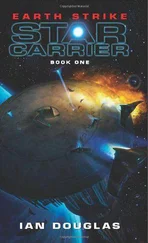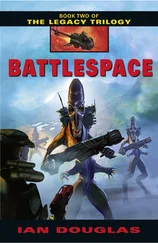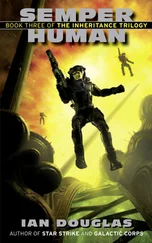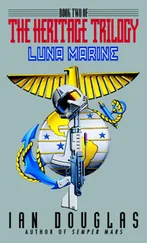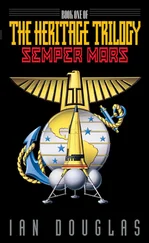“Shit.” She looked around, as if searching for another transport from the eudaimonium. “They’ll just have to make it when they make it, then. Let’s strap ’em on, ladies!”
Gray reached his waiting Starhawk, grabbed the upper lip of the opening, which shaped and hardened itself to his grasp, and dove into the black interior feetfirst. His skinsuit was already reshaping itself for flight ops; his helmet was waiting for him inside.
He wondered if he should tell Allyn what he’d seen at the party. Kirkpatrick had definitely gotten into something he shouldn’t have, and had been flying-impaired. There was no way he was going to be able to operate a fighter; though if Collins could get his deet engaged, he had a chance. Missing an emergency recall, though, was serious.
He found himself grinning as he pulled the helmet over his head and let it seal itself to the unfolding collar of his skinsuit.
His palms came down on the fighter’s control contact plates, one to his left, one to the right. At a thought, the body of the fighter faded to invisibility, and he could see the tarmac, the other fighters, the sky-glow of the eudaimonium a few kilometers to the south as clearly as if he’d been standing out in the open. Another thought switched on the fighter’s power plant and engaged the diamagnetic outer hull fields. The opening flowed shut like water, sealing him in. The Starhawk’s hull began growing longer and thinner.
Starhawks and other military fighters utilized what was known in the trade as VEG, variable external geometry. The various elemental components of the hull—carbon, iron, iridium, and dozens of others—were arranged within a nanotechnic engineering matrix that allowed them to reshape themselves within the ship’s informational morphic field. Standard flight configuration was a needle-slim shard twenty meters long, with a swelling amidships large enough to accommodate—just barely—the pilot and the primary ship systems: power, drives, life support, and weapons. As he brought the ship to flight-ready status, it lifted itself above the tarmac in a silent hover, almost as though straining against the gravitational bonds tethering it to the planet.
“Dragon Three, ready for boost,” Donovan’s voice reported.
“Seven, flight ready,” Lieutenant Walsh said.
The others began chiming in, one after another. “Dragon Nine, ready to lift,” Gray said, as around him the other fighters drifted up from the ground, levitating a few meters into the night sky. Only two, Dragonfires Five and Eleven, remained lifeless on the tarmac.
Perhaps, Gray thought, he should say something to the skipper. But one societal quirk of the Navy was identical to one found in the squatters living in the Manhat Ruins. You didn’t carry tales about others, even if you hated them. Being marked as an informer, a tattler , could be as socially crippling as being a Prim.
So long as withholding the information didn’t compromise the squadron or a mission, he would keep what he knew about Kirkpatrick to himself.
“Situational update is coming on-line,” Allyn told them.
Gray saw the data coming through … a ship of alien design, almost certainly one belonging to a Sh’daar subject race, was approaching cis-lunar space. He looked at the stats and gave a low whistle. The thing was huge .
“VFA–44,” a voice came in over the com link, “this is New York Met ATC. You are cleared for emergency launch, vector one-zero-eight plus four-one degrees at ten gravities, over.”
“New York Met ATC,” Allyn replied. “We copy clear for emergency launch, vector one-zero-eight plus four-one degrees at ten gravities. Thank you.”
“Roger and Godspeed, VFA–44.”
“Stand by to boost, close formation,” Allyn said. “Nav on auto.”
Together, the ten fighters swung their needle prows up to a forty-one-degree angle off the tarmac, then swung to face the southern horizon. Gray could see the string of faint stars marking the SupraQuito strand up in synchorbit almost directly ahead.
“Ten gravities, in four,” Allyn continued, “… three … two … one … boost !”
As one, the ten fighters hurtled skyward at one thousand meters per second per second. Gray had a brief, blurred impression of the massed lights of the eudaimonium falling away below and behind as the fighters shrieked through fast-thinning atmosphere. He thought of Angela … and decided it was good knowing she was alive.
He wondered if he would ever see her again … wondered if he wanted to.
The Starhawks had been in their atmospheric configuration for their flight in over the ocean earlier that evening, their manta-wings stretched wide to assist with banks, turns, and lift. There was no need for such finesse on the way up, however. To reach space they required only raw, savage power and high Gs. The needle configuration gave the greatest streamlining and, as the fighters climbed above the forty-thousand-meter line, they were able to feed more and more power to the flickering singularities off their bows, increasing their accelerations to just over five hundred Gs, increasing their velocities by half a million meters per second per second.
As they rose above the tenuous, uppermost wisps of Earth’s atmosphere and the stars became colder, harder, and more brilliant, flight control transferred from New York Metropolitan to SupraQuito. At the halfway point, eighteen thousand kilometers out and just two minutes later, they switched their singularities around to aft and began slowing.
“So why are we going back to the barn, Skipper?” Lieutenant Terrance Jacosta asked. “This download says the enemy is just half a million kilometers out!”
“Because we’re flying just a little light on snakes right now, numb-nuts,” Allyn replied. “Get your head out of party mode and get with the program!”
“Oh, yeah. Right.”
They’d not needed missile or impactor round load-outs for a fly-by above a friendly city, so the only weapons capability the squadron had at the moment were their StellarDyne Blue Lightning PBP–2 particle beam projectors, since those weapons pulled charged particles directly from the zero-point field. The weapons of choice for long-range work, however, were VG–10 Krait smart missiles. Starhawks generally carried a warload of thirty-two Kraits, or snakes, plus fifty thousand rounds apiece for their kinetic-kill Gatling cannons.
Gray looked at the schematic of the intruder. Sending a squadron up against that thing with nothing but beam weapons would be suicide the easy way. At least with Kraits, usually carried in load-outs with variable-yield warheads of five to fifteen kilotons, you could stand off at long range and pound the bastard until something gave. With the PBP, you had to be close, and you had to be surgically precise. With something that big, you might get better results giving the alien the finger.
In close formation, then, the ten fighters neared the SupraQuito dock facility. Gray could see America in her berth, connected to the main base structure by a transit tube and a web-work of mooring lines. Still slowing, now, to a few tens of meters per second, they passed the carrier and the dock beneath their keels—though concepts such as up and down , of course, had no meaning in microgravity. Clearing the structure by seven hundred meters, they continued decelerating, balancing their drive singularities to bring them to a dead halt relative to the America , just half a kilometer off her stern.
“VFA–44,” a voice said, “you are cleared for trap in Landing Bay Two.”
“Dragon One,” Allyn’s voice replied. “Copy. Okay, people. Switch to AI approach. Land by reverse numbers.”
Читать дальше

